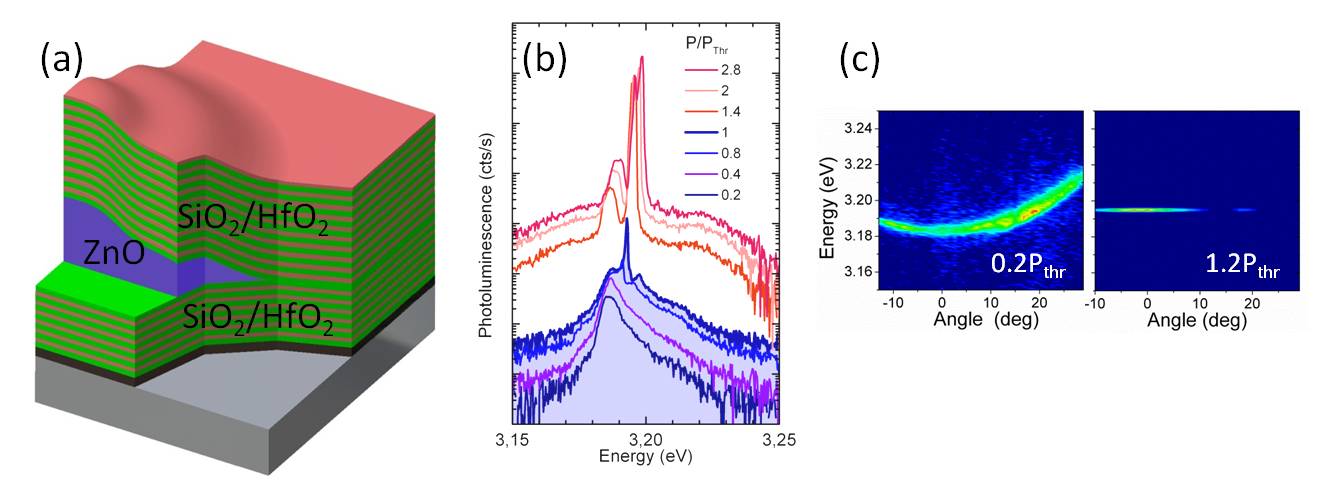| Recent publications
|
|---|
⋄ Ridge Polariton Laser: Different from a Semiconductor Edge-Emitting LaserH. Souissi, M. Gromovyi, T. Gueye, C. Brimont, L. Doyennette, D.D Solnyshkov, G. Malpuech, E. Cambril, S. Bouchoule, B. Alloing, S. Rennesson, F. Semond, J. Zúñiga-Pérez, and T. Guillet |
⋄ The low temperature limit of the excitonic Mott density in GaN: an experimental reassessmentLéo Mallet-Dida, Pierre Disseix, François Réveret, François Médard, Blandine Alloing, Jesús Zúñiga-Pérez and Joël Leymarie |
The insertion of a light emitting layer into a cavity between two mirrors modifies its emission properties. In a cavity of very high quality factor, the strong coupling between photons and excitons gives rise to the formation of new quasi-particles called cavity polaritons, half light / half material. A particularly interesting property of these polaritons is their bosonic nature, which allows them to accumulate in the same state. For the moment, most of the work on polaritons concerns fundamental aspects (Bose-Einstein condensation (BEC), superfluidity, topological defects, etc.). From a more applied point of view, we can of course exploit the optical emission of these polariton condensates to produce coherent light sources, quite similar to vertical surface emission lasers (VCSELs). The major difference between these two types of lasers lies in the physical mechanism underlying the laser effect: while the VCSEL exploits the population inversion in the gain medium, the polariton laser is based on the bosonic condensation, that is polariton relaxation stimulated by the occupation of the final state.
Most of the previous experiments were conducted at low temperatures because, even though strong coupling can be achieved up to room temperature in GaAs and CdTe systems, their low excitonic stability greatly limits their applications at ambient temperature and / or high density. of particles. To remedy this, we need to develop materials with high excitonic bonding strength, such as GaN and ZnO, which are the materials of choice at CRHEA.



